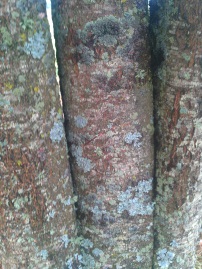Trees are hosts to many non-harmful plants, insects and animals
Trees are used by a variety of plant and animal species in symbiotic, or helpful, partnerships beneficially impacting overall ecology without harming the trees.
 There is an old adage that when lost in the woods, look for moss on the tree trunks to determine north and help with direction to reestablish contact with civilization. This is probably not the best solution to solving the situation for anyone lost in nature. Although moss will most certainly grow on the north side of tree stems, it also will grow on all the other sides of stems as well.
There is an old adage that when lost in the woods, look for moss on the tree trunks to determine north and help with direction to reestablish contact with civilization. This is probably not the best solution to solving the situation for anyone lost in nature. Although moss will most certainly grow on the north side of tree stems, it also will grow on all the other sides of stems as well.
As moss grows best in moist or more humid sunlit conditions, there may be situations where there is more growth on the north side of tree stems. In forested situations, however, the canopy of the forest itself generally provides adequate conditions for healthy establishment of moss growth on all sides of tree trunks. It may be the north side of the stems which tend to be moister and support a little more growth; however, the difference is negligible in most situations.
Moss and somewhat similar lichen grow on tree trunks, stems and branches without causing harm to the host plants. They are simply using the trees for support and advantageous growing conditions, and pose no threat to the health of the trees. Moss and lichen absorb moisture from the environment and photosynthesize their own food; they use trees and other plants only as an anchor platform for development.
More open grown trees may support more of this harmless growth then trees growing in closed canopy or dense foliage conditions. As the mosses and lichens require sunlight to sustain themselves, more access to sunlight creates better growing conditions providing there is enough atmospheric moisture available.
These hitchhiking plants in turn supply nourishment to other forest animals and insects. Deer, for instance, will feed on lichen. Small colonies of plant lice insects feed on moss and lichen and in turn are preyed on by other forest birds and animals. Additionally, trees are passive providers of nesting and perching locations for birds and other forest animals.
For additional information on forested ecosystems the publication Forests of Michigan is an excellent resource available through the Michigan State University Bookstore. Additional information is available through the Michigan State University Extension forest resource website.



 Print
Print Email
Email




